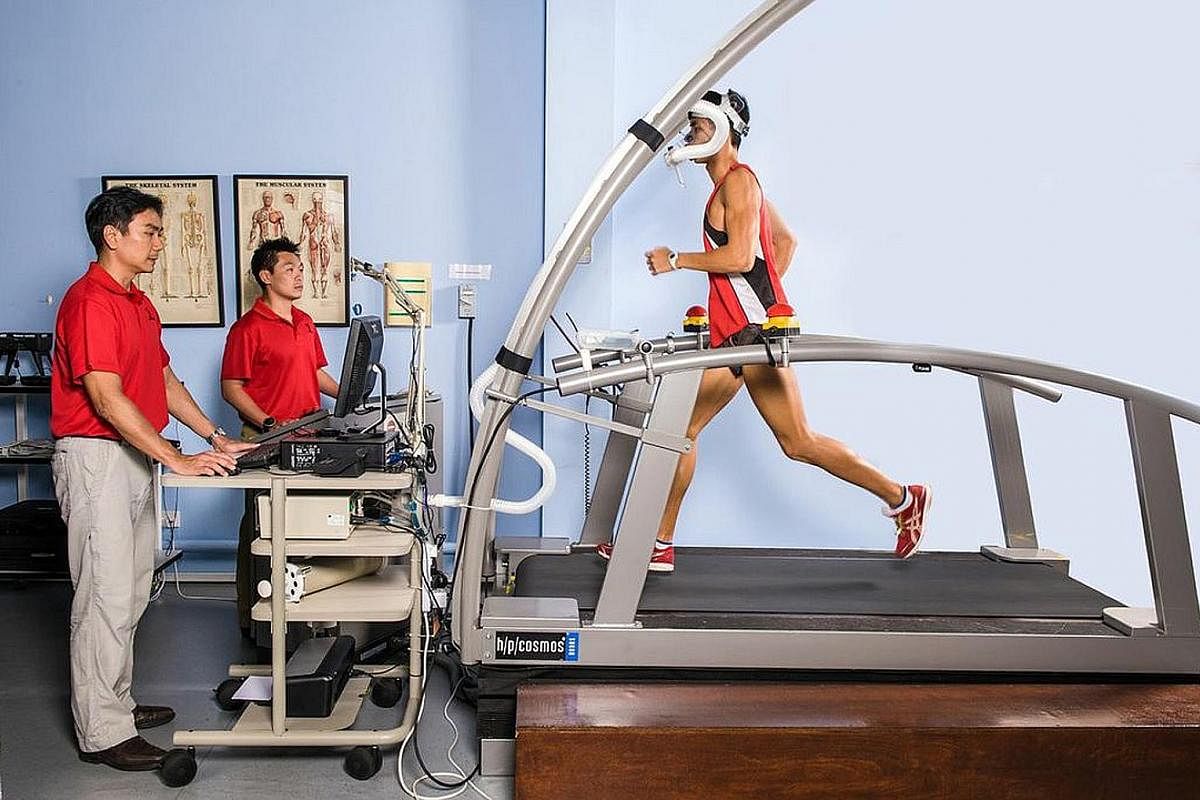ST Run: Three key factors govern performance
Physiological elements define athletes' peak efficiency, ability to manage energy demand

Have you ever wondered what is the underlying physiology that dictates performance during endurance events? What are the physiological factors that make a runner into an F1 car and why do they matter in recreational athletes?
In distance running, there are three main physiological attributes which contribute to performance: maximum oxygen uptake (VO2max), running economy (RE) and lactate threshold (LT).
MAXIMUM OXYGEN UPTAKE
A runner's VO2max is among the most widely used parameters to evaluate his cardiorespiratory fitness. It measures the maximum rate by which oxygen can be supplied and utilised by the body for energy production during exhaustive exercise.
Thus, it provides a good indication of the maximum work capacity that a runner's muscles can achieve, using oxygen for energy production. Essentially, VO2max is analogous to the fuel tank capacity of a car - the larger the capacity, the farther a car can travel.
While a car's fuel tank capacity may be indicative of the potential distance it can travel, whether the car can fulfil its potential still greatly hinges on its engine efficiency (fuel consumption rate).
Likewise, runners possessing high VO2max can perform well only if they are able to run efficiently, a concept known as RE.
RUNNING ECONOMY
An individual's RE depicts the oxygen cost (or energy demand) for a given running speed and it represents a complex interplay of various physiological and biomechanical factors.
While improvement in RE can be attained via conscious correction of running gait, it can also be improved gradually via training adaptations. So the more time a runner spends running on the road, the more efficient he becomes.
LACTATE THRESHOLD
At low running intensity/speed, a runner relies predominantly on aerobic respiration (producing energy using oxygen) for locomotion.
As intensity increases, the body eventually reaches a point where energy demand exceeds the capacity of aerobic respiration and it starts to rely on less sustainable sources of energy without using oxygen (anaerobic respiration).
The point where lactate starts to rise above resting level marks the LT of a runner. Although the science attributing fatigue to lactate accumulation is far from convincing, there is nonetheless a strong relationship between LT and endurance performance.
The LT is akin to the horsepower of a car engine. Regardless of the fuel tank capacity, a car requires a high-horsepower engine before it can be sustainably driven at high speed without going into overdrive.
Similarly, a higher LT allows runners to sustain a greater running speed without relying on anaerobic energy production. Endurance training can improve LT, but there is no consensus on the best training method for the improvement in LT.
WHY DO THESE MATTER?
The concepts of VO2max, RE and LT have been the cornerstones for training prescriptions and the monitoring of training progression in elite endurance athletes, and they can be easily applied to the everyday runners too.
Unfortunately, accessibility to exercise lab testing is limited in Singapore and can come with high costs.
Marathoner Evan Chee, an everyday runner who was the fastest Asian in the inaugural Bangkok Midnight Marathon in May 2017, shared his grouses: "I have not done a lab test because my coach and I had found success to gauge my fitness using my performance in time trials and races. Moreover, it can be costly to do a lab test."
Banjamin Quek, an NUS undergraduate who is managed by running group ONE Athlete, says that treadmill tests feel different from running outdoors. "I sometimes just can't push myself as hard on the treadmill as compared to running outdoors because of the lack of visual cues. Besides, the tests are not readily available too," he said.
However, there is no need to fret. Key indicators such as VO2max can be easily and reliably estimated via GPS-sports watches or even simple running tests. This will suffice to serve as guidance for the prescription of exercise intensity to achieve optimal training stimulation with minimal risks of injury.
• Dr Ivan Low is a research fellow in the department of physiology, National University of Singapore. He ran the Boston Marathon in 2015, and also extends his expertise to runONE's training programme for ST Run 2017.

Join ST's Telegram channel and get the latest breaking news delivered to you.
A version of this article appeared in the print edition of The Straits Times on June 17, 2017, with the headline ST Run: Three key factors govern performance. Subscribe
